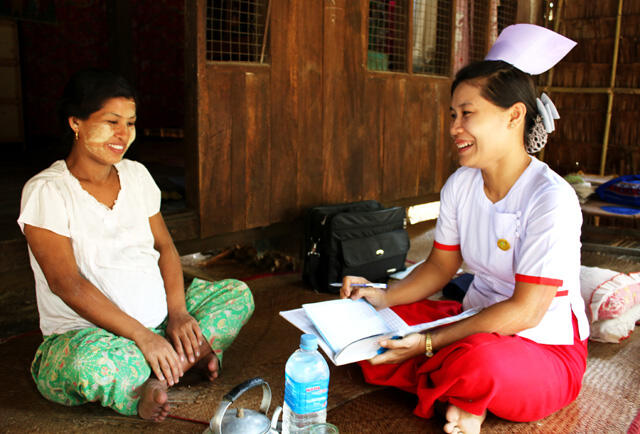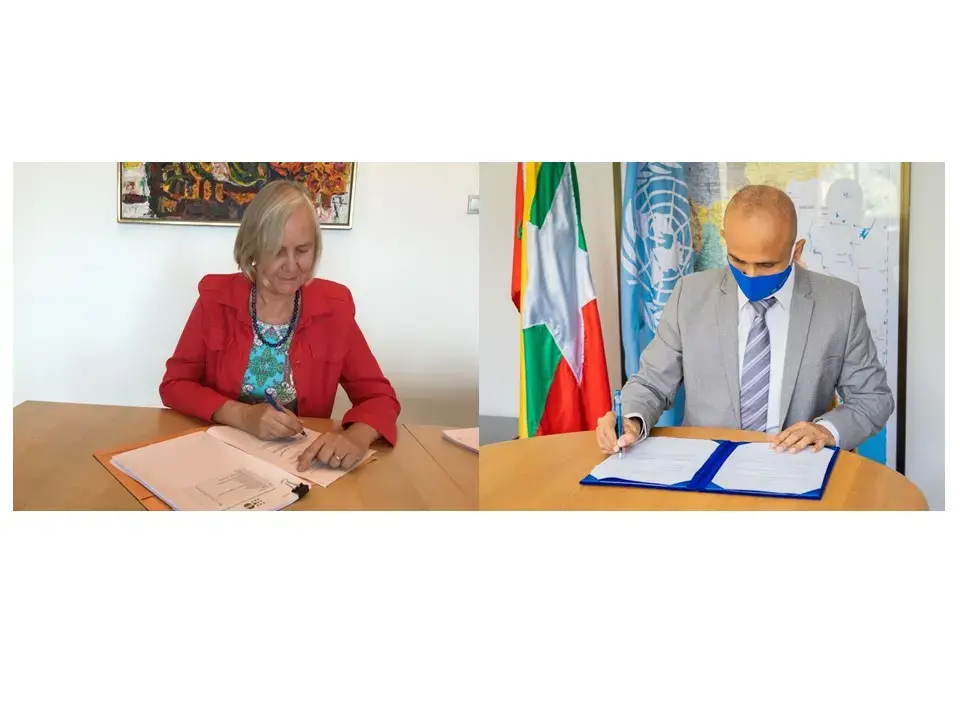AYEYAWADY, Myanmar - “It was two in the morning. We were in a small wooden boat pulled here and there by the stream. I barely saw a thing in the dim light. After hours of painful labour, the mother gave a final push to deliver her baby, and then chaos broke loose. She started bleeding profusely. The situation was desperate. I did everything I could to save her life as we floated down the river towards the hospital.”
Midwife Phyu Phyu Win, 37, is re-living the heart-stopping moment as she tells the story. Then gives a sign of relief: “The mother lived, and so did her baby.”
Midwives are pillars of the community
For 16 years Phyu Phyu Win has made the difference between life and death for countless people in Kyaunggon township in Myanmar’s delta region Ayeyawady. Midwives act as an agent for both mother and baby to ensure they are healthy and safe throughout the phases of pregnancy and childbirth. But midwives do more than just deliver babies. They are one of the pillars that strengthen healthy families, and they are essential for communities.
“Many women cannot visit the clinic regularly because they work all day long. So I visit 10 villages every week to make sure the women receive antenatal care and contraceptives”, says Phyu Phyu Win.
Today she is visiting Su Su Hlaing, 34, in Phayargyi Gon village. Su Su touches her belly and shares:
“Phyu Phyu Win says the baby and I are healthy. The baby in my belly is already 7 months old. We cannot wait to welcome her or him. I am glad my older son will not be alone.”
The cause of death is not the whole story
The Myanmar proverb “ေယာက္်ားေဖာင္စီး၊ မိန္းမမီးေန” is used to convey that most the dangerous time in a woman’s life is when she is in labour. Giving birth can be a close encounter with death. At 282 per 100,000 live births Myanmar’s maternal mortality ratio (MMR) is the second-highest in South-East Asia. 2800 women die each year in Myanmar from preventable causes related to pregnancy and childbirth.
Well-trained midwives can help avert almost two-thirds of all maternal and newborn deaths globally. Their people-centered reproductive health care is critical to the sustainable development goal target of reducing the global MMR to less than 70 by 2030. Phyu Phyu Win remembers not only the women and babies she has saved, but also grieves for those whose lives were lost.
In Myanmar the most common causes of maternal death are post-partum haemorrhage (bleeding), eclampsia and sepsis. But the cause of death seldom tells the whole story about why a woman died. To identify the root causes of each maternal death, and to prevent future deaths, UNFPA supports the Ministry of Health and Sports’ nationwide roll-out of the Maternal Death Surveillance and Response (MDSR) mechanism. It focuses on the health system’s management of care and prevention, but also on factors stemming from the realities of different communities in a geographically and socially diverse country.
Medical staff always visit with a woman’s family after a maternal death to further investigate circumstances that may have contributed to her death. They find out, for example, if the woman had received antenatal care, if she followed the medical advice, if there were there financial, information or social barriers that prevented her from accessing the care she needed.
“What keeps me going is a happy mother and the cries of a healthy baby”
Findings are channelled into the MDSR system where the data generated from each death facilitates both immediate action and strategy. The trends guide policymakers and planners as they select and develop the responses and actions that can avert future maternal deaths, and that are tailored to the specific situation in different parts of the country. In 2017, UNFPA provided technical and financial support to training manuals, information material, and data analysis
Maternal death in rural areas is higher than in urban areas. Findings from the 2014 census show that 20 per cent of pregnant women did not receive any type of antenatal care in rural areas compared to 6.5 per cent in urban areas. At 354 per 100,000 live births, Ayeyawady’s MMR is the second-highest after Chin. Last year, five women died giving life in Kyaunggon alone. The township medical officer U Aye Naing has embraced MDSR as an important part of the solution. 65 midwives have already been trained to use MDRS and U Aye Naing believes it is making a difference:
“The system encourages them to deliver quality care services”, he says.
Midwife Phyu Phyu Win is glad that there is now a system that can turn harrowing experiences of mothers dying in childbirth into systematic and positive action. Her MDSR training complements her personal commitment, which has always run deep:
“What keeps me going is a happy mother and the cries of a healthy baby.”



